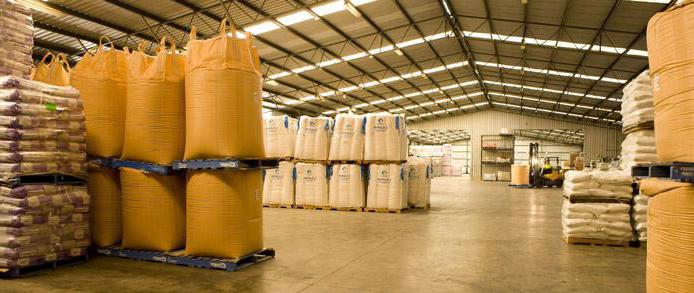Own sources of funds - this is the property of the enterprise in monetary terms, defined as the difference between liabilities and assets. Own funds are the most optimal way to finance the organization, which reduces the likelihood of bankruptcy. The structure of the enterprise’s education sources includes not only the contributions of the founders, but also borrowed funds.
Structure
Depending on how the capital of the enterprise is formed, equity financing is divided into 2 groups: internal sources and borrowed (external).
In turn, internal funds consist of:
- equity capital (authorized, reserve, additional);
- arrived;
- depreciation amounts;
- income from the sale or leasing of unused OS;
- reserves;
- targeted financing funds.

External sources of the formation of own funds consist of loans, gratuitous aid, issue of securities. Moreover, assistance can be expressed both in monetary terms and in transferred property.
Borrowed capital consists of loans received, loans from banks, other organizations, extra-budgetary funds. Funds earned by issuing bonds and selling them are also classified in this category.
Seed capital
The main source of equity is authorized capital. Its monetary value is determined by the constituent documents. This is the initial amount contributed by the owners of the enterprise, forming in the future fixed and current assets.
The authorized capital, depending on the type of organization, may consist of contributions:
- founders;
- shares;
- funds from the sale of shares.
Depending on the type of legal form and organization of the enterprise, the amount of initial contributions may be different, as well as the amount of initial capital. Money contributed by the founders must be transferred to the company’s current account. If the contribution was made in the form of property, an act of its transfer and acceptance is drawn up.
Current assets of the enterprise
After creating the authorized capital, the company forms working capital and circulation funds necessary for the operation and profit. The first are involved in production activities. They consist of the property of the organization, fully used in the manufacturing processes. This does not include fixed assets, because they are involved in the production process more than once. The entire cost of working capital is fully included in the cost of production.

Funds circulation do not participate in the production of products and characterize the next part of the enterprise - implementation. The fund consists of shipped but unpaid goods, finished goods at the warehouse, and funds of the enterprise.
Working capital participation in the financial activities of the company
The structure of working capital is a mobile asset that is fully spent and goes through several stages:
- Money - the company buys the refineries necessary for the production of products.
- Production - acquired inventories go into incomplete objects of labor or finished products.
- Commodity - the enterprise carries out the implementation process. Profits are received for the goods sold.
The combination of funds in circulation is due to the presence of a continuous upfront cost at all stages of the circuit.The structure of working capital is the result of the relationship of certain categories of funds, expressed as a percentage of the total result. The ratio of the sums of money invested in each of the working capital funds is an important indicator of the effectiveness of their use.
Composition and financing of working capital
Working capital consists of several categories of property, which are allocated depending on the nature of participation in the production cycle. Consider the main ones:
- MPZ - make up the majority of current assets. These are raw materials, materials, spare parts and accessories, inventory, semi-finished products and tools. In other words, objects of labor.
- Work in progress - items of the labor process that have not undergone full processing and remain at workplaces of production.
- Deferred expenses - part of the funds intended to cover the costs of improving manufacturing techniques or changing equipment. Funds are spent in this period, but are planned for repayment in future months.
- Other funds - other funds of the subsidiary economy of the organization.

Working capital financing may be based on equity, borrowed or raised capital. Own sources of means of the production cycle are created from the proceeds from the implementation process and some of the profit. Attracted funds for the formation of revolving funds include the amount of payments, the demand for which has not yet occurred. For example, funds allocated to pay taxes or labor of employees.
Reserves
The reserve capital of the enterprise is formed somewhat later than the authorized capital. After the start of financial activity, the company makes a profit, which creates the amount of reserve funds. The amount of reserve capital is governed by accounting policies. Some enterprises do not create reserves at all. Others set the interest rate according to which funds are transferred annually to the accounts of the reserve funds.
Spare own sources of funds are created with the aim of:
- covering unforeseen losses or losses if the company does not have other means;
- payment of income to founders in the absence of funds intended for this;
- redemption of bonds or repurchase of shares of own organization.
If at the end of the year the reserve capital is not fully spent, the account balances will be transferred to the next year.
Additional capital
The amount of additional capital is generated by the additional income of the enterprise due to the revaluation of non-current assets (in case of an increase in value) or a positive difference between the nominal and sale value of the shares of the enterprise. The frequency of revaluation of the OS is determined by the accounting policy.

Share premium is only possible for an enterprise with the legal form of a joint stock company. A positive difference between the value of shares can occur both during the creation of the company, and in the case of an increase in the size of the authorized capital.
Profit
After creating the authorized capital, the company begins financial activity. Own sources of funds are replenished with another - profit. This is the amount characterizing the excess of income over expenses in cash. There are three types of profit: accounting, net and retained.
The amount of accounting profit is the total amount of the organization’s income for the period in question, excluding taxes. The value is reflected in the data, but in fact the company will own a different amount.

After paying income tax and other obligatory payments, net profit is generated. The company fully owns this amount, but the dividends due to the founders are deducted from it.
The funds remaining after the payment of dividends comprise retained earnings, which remain in the possession of the enterprise.Retained earnings are sources of long-term financial resources.
Targeted Funds
Own sources of funds of some enterprises may constitute income for intended use. Amounts of targeted financing are transferred by other companies or the budget of the Russian Federation. At the same time, strict control is being exercised on the use of such funds: money can only be spent on relevant needs. After applying the target money, the organization must compile reporting documentation.

The amount of earmarked financing relates to the equity of the enterprise, since the funds received do not need to be returned. Such contributions may include subsidies, membership fees, grants. Usually targeted funding is for charitable and socially useful purposes. For example, the construction of social facilities, conducting research and conferences for the development of science.
Depreciation deductions
The cost expression of depreciation of fixed assets and intangible assets is accumulated annually in the accounts of accounting, thereby minimizing the costs of the enterprise for the reproduction of property. This source differs from others in that in any financial situation, accumulations will continue to be made and will remain on the account of the enterprise.
The total amount of deductions directly depends on the selected depreciation method. The choice of a competent method in most cases directly affects the self-financing of the enterprise. Management needs to pay due attention to this source: the effective use of depreciation amounts will positively affect the financial well-being of the enterprise.
Advantages of internal sources
The use in the process of activity only own sources of funds, of course, positively affects the work of the enterprise. The advantages of self-financing include:
- lack of need to attract borrowed capital and extra costs associated with it;
- high financial stability and competitiveness;
- the ability of founders to control the processes of the enterprise;
- more favorable environment for attracting borrowed capital, if necessary.
Borrowed funds
Borrowed capital - the main source of external financing of the enterprise, and often the only one. Represent a group of borrowed funds of a different type of obligation:
- bank loans;
- borrowed funds;
- Amounts payable.

Despite the negative impact of borrowed funds on the financial position of the company, they play an important role in the course of business and even bring benefits. Attracting funds from external sources provokes an accelerated turnover of working capital and a reduction in work in progress.
Characteristics of borrowed funds
Consider the main external sources of own funds of the enterprise:
- Bank loans - an obligation to the bank, which, depending on the term of financing, may be short-term or long-term. Short-term loans are issued for a period of not more than 1 year for the small production needs of the enterprise. Long-term loans are issued for a longer period.
- Loans are a group of funds received from other legal entities acting as a borrower (but not banks). For registration, bills of exchange, a contract of debt obligations and other forms can be used. This also includes funds earned from the sale of own bonds.
- Accounts payable are expressed in various kinds of liabilities of the enterprise, the main of which are estimated and the distribution of GDP. The first group consists of debts to suppliers of goods or services, the second - debts to employees and the state budget.
Own funds of the enterprise determine the path of its further development. When forming sources of financing, it is necessary to carefully consider the nature of the funds in order to direct the company's activities in the right direction.
